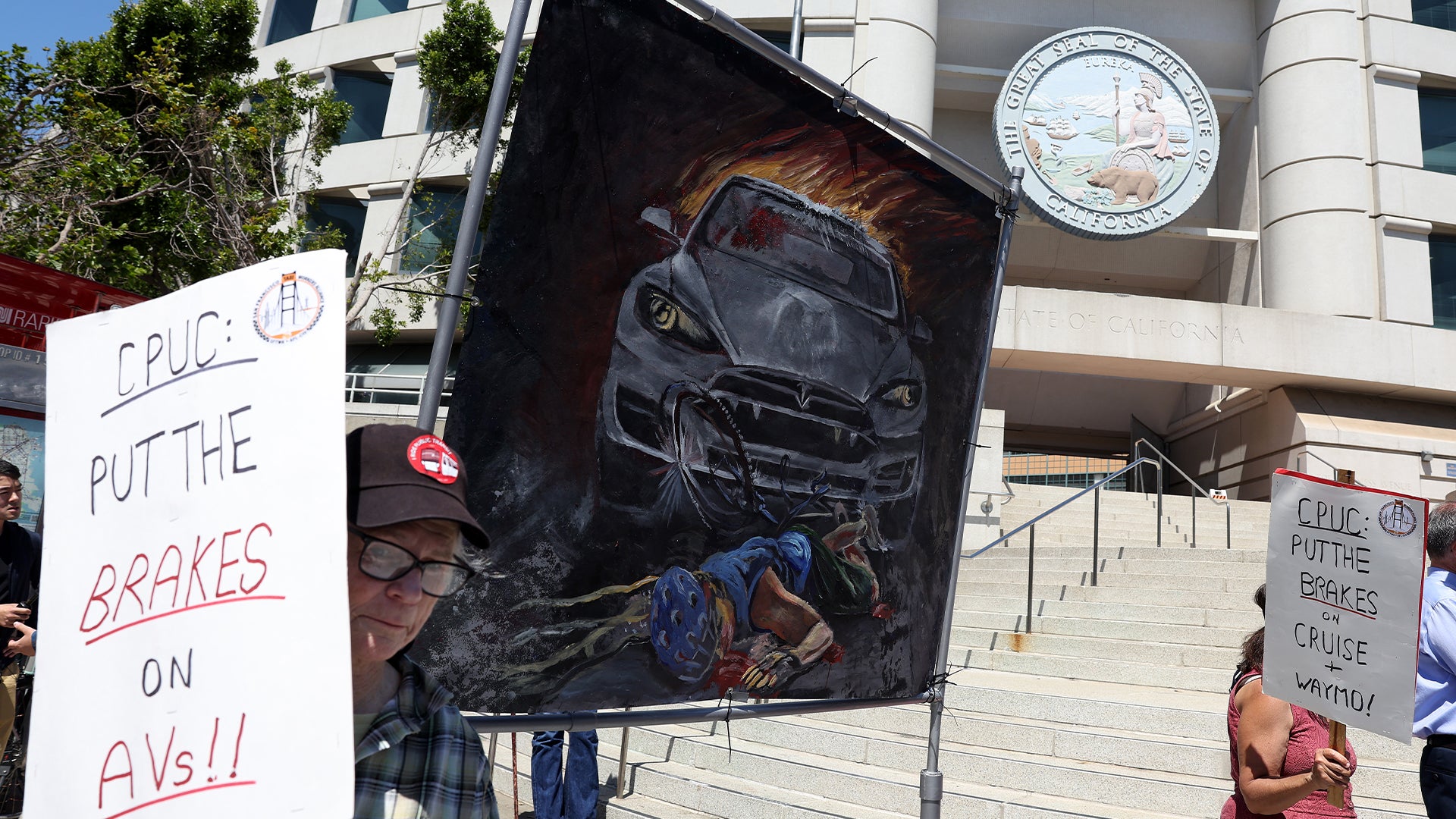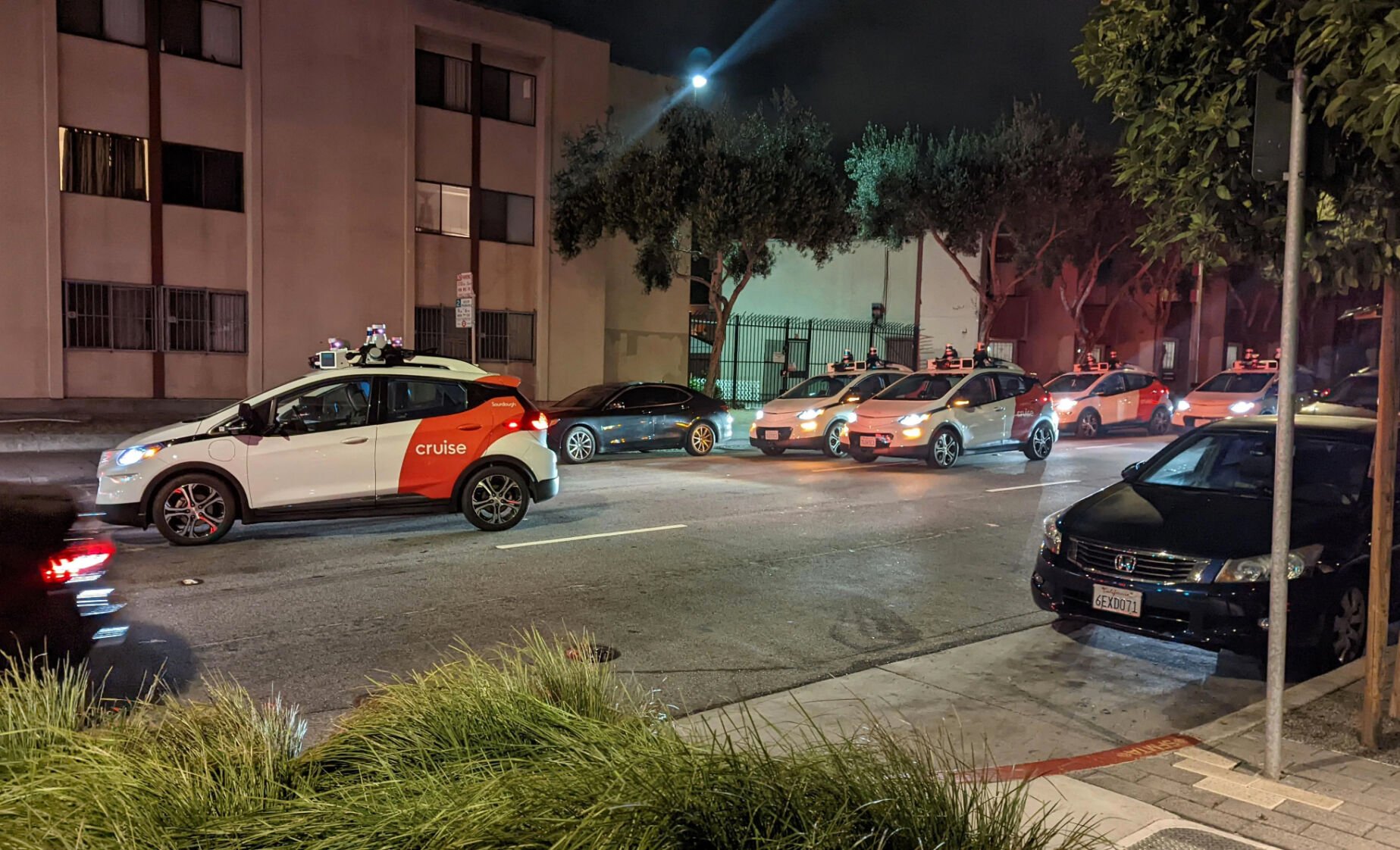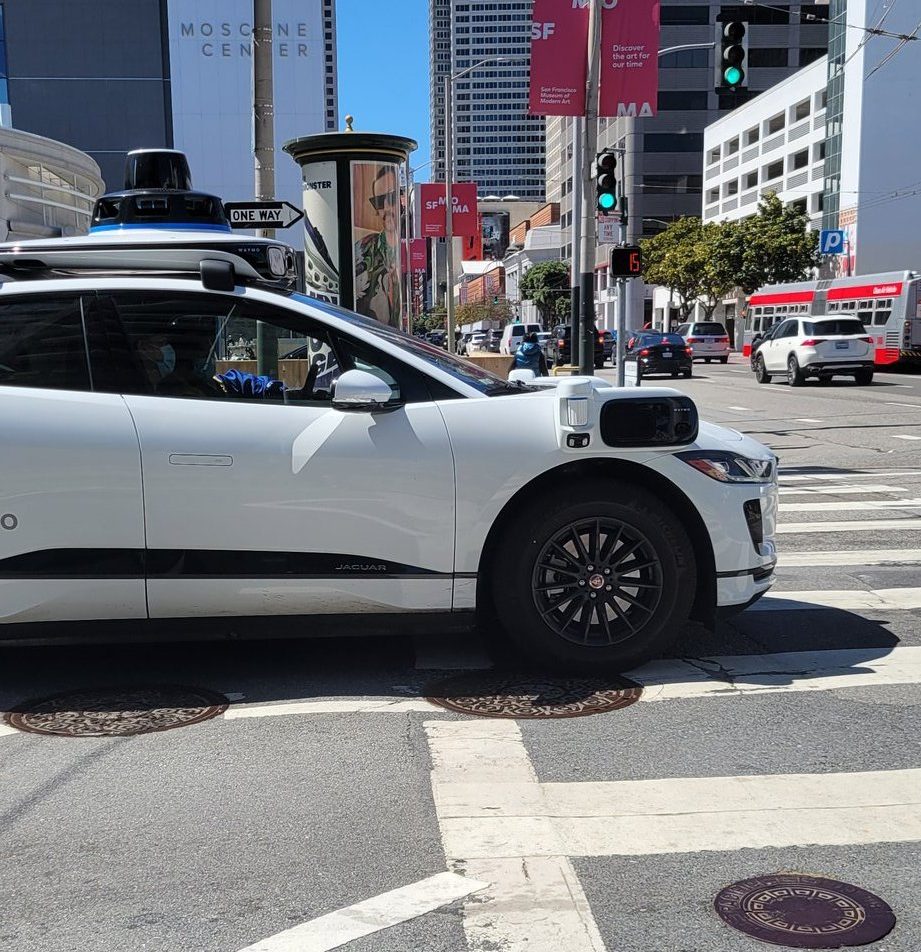A debate over self-driving cars has reached a fever pitch in San Francisco. Companies like Cruise (a subsidiary of General Motors) and Waymo (a subsidiary of Alphabet/Google), under mounting pressure to commercialize their decades of research & development into autonomous vehicles, have been pushing hard to expand self-driving taxi services in the city. At the same time, city officials are sounding the alarm about how their cars are disrupting essential services including public transit and emergency vehicles. Grassroots advocates from all sides have also jumped into the fray, engaging in everything from online tech boosterism to guerrilla tactics to disable vehicles on sight.
Last month, the California Public Utilities Commission (CPUC) – the notoriously lax state regulator also responsible for unleashing TNCs like Uber & Lyft – finally enabled the companies to run robotaxis 24/7 on San Francisco’s streets after hours of impassioned public comment.

Watching the drama play out from the sidelines, I was originally torn on this issue. As a former member of the tech industry, I believe that software still has great potential to improve lives – and yes, even save lives in this context. The crash report data is compelling, and I am confident that autonomous vehicles will eventually be proven safer than humans behind the wheel in the vast majority of circumstances. However, as a recent urban planning graduate, I also understand the negative externalities that autonomous vehicles will bring and am extremely hesitant to recommend unfettered access to them.
I have three main concerns I wish the autonomous vehicle companies would consider as they push their technology forward: the low threshold of quality for testing on public streets, the consequences of increasing car dependency in cities, and the misguided choice of application for this technology. Unfortunately, it is not clear that market incentives exist for these companies to change their direction on any of these issues.
Public streets are no place for beta software
Every software engineer will tell you there is no such thing as perfect software without any bugs. Every product manager can likely tell you a story of when they had to make a call to ship software that was “good enough” despite many known issues that were triaged and deemed not worth fixing. Shipping buggy software is not a huge deal when it’s a social media app or a video game, but the bar should go up when human lives are at stake.

Today, it’s clear that self-driving cars still have issues that should bar them from operating completely autonomously in public environments (or “in production” as they would say in the tech industry). Being unable to recognize emergency vehicles and behave appropriately (i.e., pull over) should be unacceptable. Failing to account for poor cellular coverage with a fallback mechanism that doesn’t block traffic should be a “P0” (or “high priority”) blocker issue that prevents shipping the software. Perhaps the product teams at Cruise would disagree with these takes, but what’s more likely is that they are being pressured into shipping unfinished software to demonstrate progress for their company’s investors. This investor pressure may be common at many Silicon Valley companies, but I would hope that employees who have ever taken an ethics course find the will to push back against company leadership on this.
During the initial testing of autonomous vehicles in San Francisco, there was a period when human co-pilots were required to be present and ready to take over if the software failed. This practice should become mandatory again until the known high-priority issues (as called out by city officials) are addressed.
Increasing access to cars will only induce demand for more cars
Interestingly, professionals in both the technology and transportation industries often cite this infamous idiom: “If you build it, they will come.” Build a great mobile app, and people will find it. Build a new light rail line, and people will start using it. Unfortunately, this is also how the theory of induced demand works: build another highway lane, and traffic will increase to consume the additional capacity. This is because the theoretical demand for mobility is infinite. The easier and cheaper it becomes to travel, the more humans naturally want to take trips.
The naïve Silicon Valley take on this would be: “But we’re making something people want!” True, consumer interest in self-driving cars is sky-high. But another quote now comes to mind: “Your scientists were so preoccupied with whether they could, they didn’t stop to think if they should.” Even if a company believes they are just responding to consumer demand, second-order (and third-order) consequences matter.
When this lens is applied to autonomous vehicles in a constrained city environment, the consequences of expanding robotaxi service should become clear. People will want to try taking robotaxis for more trips as they will certainly be cheaper than a traditional taxi with a driver. The companies will deploy more of their vehicles onto streets to serve the growing demand, and lobby to increase their allowable fleet size. As more autonomous vehicles flood the streets, they will add to traffic congestion just like TNCs (Uber & Lyft) did before them. Sure, autonomous vehicles may use more efficient routing and disturb traffic patterns less than inexperienced Uber or Lyft drivers, but they are ultimately still cars – taking up just as much extremely valuable space on city streets as other cars. The calculus only gets worse when considering self-driving modes on privately owned automobiles.

Therein lies the crux of the issue, which is that all this autonomous driving technology further reinforces unsustainable, car-oriented societies. The grand future vision of everyone being ferried around in synchronized autonomous vehicles is both an impossible fantasy (geometrically speaking) and a textbook case of elite projection. Promoting these kinds of car-centric solutions will only lead to less walkable built environments and further entrenches #CarBrain in American society. Policymakers should proactively cap the number of vehicles as part of a holistic regulatory approach, even if the companies continue to lobby for more growth.
There are better uses for autonomous tech
This situation is particularly maddening because there is a type of transportation that could benefit from more automation technology right now: public transit! There is currently a nationwide shortage of labor to operate buses and trains – causing public transit agencies to cut service even when funds are available to run it. This is less of a crisis for regions that have invested in driverless rail systems (e.g., Vancouver, Honolulu, and Montreal), but it begs the question: why hasn’t there been more investment into automating bus service in North America? The FTA’s latest report on transit bus automation shows a smattering of pilot efforts around the country (and New Flyer apparently shipped a prototype in 2021), but nothing comes close to the current scale or future ambition of Cruise or Waymo.

The likely answer here is that there’s just not much money to be made in mass transit as compared to private robotaxi services. Neither venture capital (VC) firms nor traditional automakers (like General Motors) would likely bite if a startup pitched an autonomous bus, as the total addressable market (TAM) composed of public transit agencies would pale in comparison to a car-oriented service – simply given the difference in potential profit margin. This classic market failure scenario suggests the only way forward is government intervention and subsidization of research & development, which will take much more time to materialize.
Until then, we can only expect private autonomous vehicle companies to pursue what’s best for their bottom line – which really just means automating (not solving) real transportation problems.
***
Simon Tan is a self-described "former technologist" and a recently graduated urban planner, inspired to build safe and sustainable transportation options. He is currently helping Sound Transit execute one of the largest transit expansions in North America. This post originally appeared on Tan's blog, briskmobility.com, and is published here with permission.





